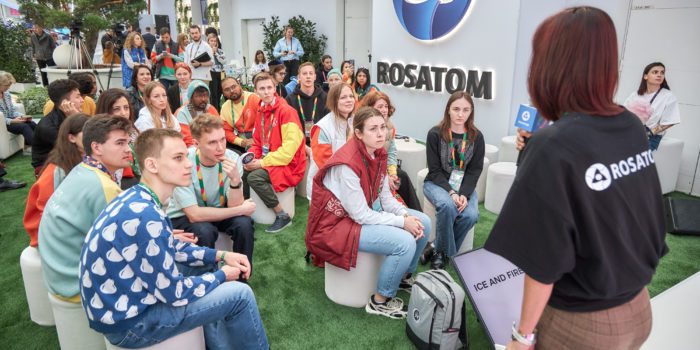Rosatom's Mining and Chemical Combine in Zheleznogorsk, Krasnoyarsk region, has manufactured the first three fuel assemblies with uranium-plutonium MOX fuel, which contain in their fuel matrix not only plutonium, but also other transuranic elements — americium-241 and neptunium-237. The fuel bundles have been successfully accepted and will be loaded into the BN-800 fast neutrons reactor at the Beloyarsk NPP in 2024. The innovative fuel will undergo pilot operation (lead-test assemblies program) during three micro-campaigns (approximately one and a half years).
Minor actinides are all other transuranic elements other than plutonium that are formed in irradiated nuclear fuel as the result of nuclear reactions during operation in a reactor core. Like plutonium, these elements do not occur in the nature, but arise only from transmutation of uranium. Neptunium, americium and curium isotopes are particularly important to radiochemists because of their significance in spent nuclear fuel reprocessing and radioactive waste management. These elements are highly radioactive and toxic, generate much heat, have long half-lives, and are in fact the most hazardous components of nuclear waste.
The Russian solution for the minor actinides problem should be innovative fast neutron reactors. These installations may be fueled not only by enriched natural uranium, but also by secondary products of the nuclear fuel cycle, such as depleted uranium and plutonium. In addition, the research shows that minor actinides from spent nuclear fuel under the flux of fast neutrons will fission into fragments representing a fairly wide range of radioactive and stable isotopes, but in general their potential hazard will be much lower than that of the original minor actinides. The transmutation process of minor actinides is also called “afterburning” in a reactor.
“Rosatom is step by step taking the unique advantages that powerful fast neutron reactors provide to our industry. Introduction of MOX fuel enables to expand the resource base for nuclear power multifold involving depleted uranium and plutonium, and also to reprocess irradiated fuel instead of storing it. Afterburning of minor actinides is the next step in closing nuclear fuel cycle, which should not only reduce the amount of nuclear waste for final isolation, but also significantly reduce its radioactivity. In the long term, it would enable to avoid the complicated and expensive deep burial of waste,” commented Alexander Ugryumov, Senior Vice President for Research and Development at TVEL Fuel Company of Rosatom.
The technology of MOX fuel fabrication (including the fuel with minor actinides) was developed by the Bochvar Institute, a research facility of TVEL Fuel company in Moscow. The lead-test assemblies of MOX fuel with americium-241 and neptunium-237 were manufactured with the standard equipment of Mining and Chemical Combine under the in-house technology.
Fabrication of fuel assemblies with minor actinides and their pilot operation in the BN-800 reactor is the key stage of the comprehensive research program of Rosatom's TVEL Fuel Company for minor actinides afterburning. It started in 2021 as part of the Balanced Nuclear Fuel Cycle product line and is scheduled to run until 2035. The program includes projects of minor actinides separation into different fractions, their intermediate storage, involvement in fast reactor fuel, operation of such fuel, post-irradiation studies, etc. Another important issue is optimization of reactor facilities for burning the maximum volume of minor actinides.
Reference
Thermal neutron reactors, which make-up the core of the modern nuclear power industry, use about 1% of natural uranium, the remaining 99% is in fact sent for temporary storage or disposed as radioactive waste. Fast reactors, using a mixture of uranium and plutonium oxides as fuel, are produce enough plutonium to support the development of nuclear power industry.
Balanced nuclear fuel cycle (NFC) is a complex product of Rosatom. It is based on innovative practical solutions for closing the nuclear fuel cycle, which enable for efficient reprocessing of irradiated nuclear fuel and ensure rational management of products after processing, both useful (uranium and plutonium) and disposed (fission products).
Balanced NFC is mainly aimed at principal reduction of the volume and effect of radioactive disposed waste. Balanced NFC:
- improves the safety of nuclear waste management and reduces environmental risks;
- addresses the problem of future generations and gives a pattern for sustainable consumption and production;
- reduces the volume and level of hazard of disposed waste to a minimum;
- reuses valuable raw materials in the NFC, i.e. recycles nuclear materials.





